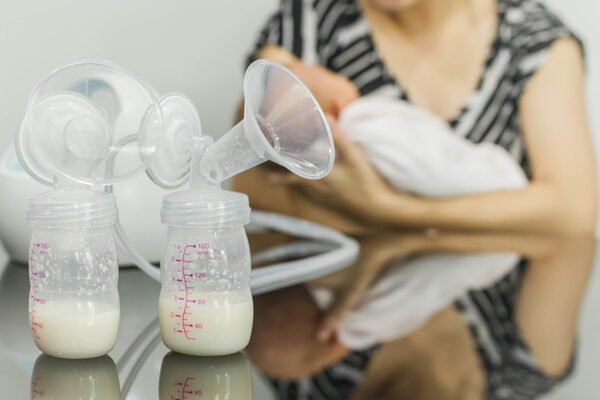Highlights
- FLSA Protections: Under the FLSA, most nursing employees have the right to reasonable break time and a place that is shielded from view to express breast milk while at work. This right is available for up to one year after a child’s birth.
- PUMP Act Expansions: The PUMP Act expands the FLSA’s existing protections and extends its coverage to include employees who are exempt from overtime.
On Dec. 29, 2022, the Providing Urgent Maternal Protections for Nursing Mothers (PUMP) Act expanded existing requirements under the Fair Labor Standards Act (FLSA) for employers to provide break time and a private place other than a bathroom for employees to express breast milk.
Under the PUMP Act, these requirements now apply to almost all FLSA-covered employees, including those who are exempt from FLSA overtime rules. The PUMP Act also clarifies that the required breaks to pump breast milk must be paid when employees are not completely relieved of all work duties. A hardship exemption from these new requirements is available for employers with fewer than 50 employees.
The U.S. Department of Labor (DOL), through its Wage and Hour Division, enforces most of the FLSA’s provisions and has issued a series of guidance documents with answers to frequently asked questions (FAQs) about how employers in certain industries must comply with the PUMP Act. This Compliance Bulletin provides a lightly edited version of the DOL’s FAQs on the PUMP Act for employers in the care industry.
Important Dates
- Dec. 29, 2022: The PUMP Act was enacted and went into effect. The PWFA, which requires reasonable accommodations for pregnancy and related conditions, was also signed into law.
- April 28, 2023: As of this date, employers may be sued for damages and other remedies under the PUMP Act.
Action Steps
Employers in the care industry should become familiar with all applicable requirements under the PUMP Act and with the DOL’s additional guidance for their specific industries.
In addition, all employers with 15 or more employees should ensure compliance with a related law, the Pregnant Workers Fairness Act (PWFA), that requires reasonable accommodations for individuals with limitations related to pregnancy, childbirth or related medical conditions.
FAQs on PUMP-at-Work Protections Under the FLSA in the Care Industry
Q: Do doctors and nurses, including those who work as traveling care providers, have a right to pump at work?
Yes. Doctors and nurses have the right to pump at work. Most employees have the right to take reasonable break time to express breast milk for their nursing child. For one year after a child’s birth, covered employees may take reasonable break time “each time such employee has [a] need to express the milk.”
An employer may not deny a covered employee a needed break to pump. New, part-time, and temporary employees have the same right to pump at work as full-time, permanent employees.
Q: Can an employee working in an assisted living center be interrupted by their employer on their pump break to be asked to respond to a resident’s needs?
No. Most employees have the right to take reasonable break time to express breast milk for their nursing child for one year after the child’s birth. An employer may not deny a covered employee a needed break to pump, including when the employee works in the medical profession.
In addition, when an employee uses break time at work to express breast milk, they must either be completely relieved from duty or paid for the break time.
Q: Can an employee who works in a hospital be required to find someone to cover for them when they need to take their pump breaks?
No. While employees and employers are encouraged to discuss pumping needs and available space to develop shared expectations, it is the employer’s responsibility to provide the needed break time and space and ensure that any necessary duties are covered during an employee’s pump breaks.
Some employers use temporary staff or floating staff to fill in for workers when they must be away from their duty station, including when they are away to pump.
Q: Our medical office building has a large, dedicated room for nursing employees to take pump breaks. The room is set up so more than one employee can take a pump break at the same time. Can I ask them to share the pump space?
Yes. The FLSA does not require that employers create permanent, dedicated spaces for employee pump breaks. Some employers may choose to provide a shared space, such as a large room with privacy screens between employees, which may be used by multiple employees simultaneously to pump. The employer must ensure that all employees are shielded from view and free from intrusion when pumping, including from co-workers who are also pumping.
More Information
More information about the PUMP Act and the PWFA is available on the U.S. Equal Employment Opportunity Commission’s Pregnancy Discrimination and Pregnancy-Related Disability Discrimination website.
Material posted on this website is for informational purposes only and does not constitute a legal opinion or medical advice. Contact your legal representative or medical professional for information specific to your legal or medical needs.



